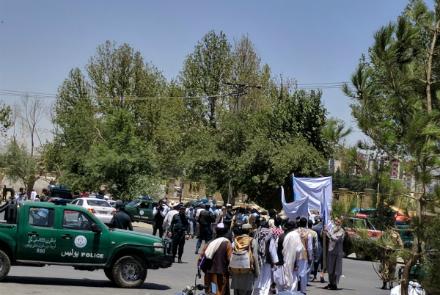Members of the Helmand Peace Convoy on Sunday marched through the streets of Kabul as they made their way to the United Nations Assistance Mission for Afghanistan (UNAMA) compound in PD10 in Shar-e-Naw where they will carry out a three-day sit in protest.
This is the next phase of their protest action which started about two months ago and one that has continued to gather momentum.
Initially they launched a sit-in protest in Lashkargah city after a suicide bombing outside a stadium. About a month later, a group of eight protestors left Helmand on foot for Kabul, all the while spreading messages of peace.
The activists walked through towns and villages, crossed provinces and met with local residents along the way. And as they progressed, so their numbers grew.
About 700km later, the group of eight had grown to an estimated 100.
Finally arriving in Kabul last week, they handed over demands for a ceasefire and peace to both the Afghan government and the Taliban.
The group gave the Taliban three days in which to answer and said if they failed to do so, they would embark on sit in protests outside diplomatic offices and missions in the capital.
The Taliban’s deadline was Friday and after receiving no response from the insurgent group, the peace activists announced on Saturday they would embark on their sit in protest from Sunday – their first stop being the UNAMA compound.
The convoy’s spokesman Bismillah Watandost said on Sunday: “We will spend three days in front of each embassy. During these three days, we will try to launch demonstrations in those countries that we are protesting against. By holding our demonstrations, we want to create a relationship between our people and the citizens of those countries; and we hope the citizens of the foreign countries ask their governments why Afghans are protesting outside their embassies,” Watandost said.
The activists, whose ages range from 17 to 65, come from all walks of life and include students, athletes and farmers among others.


